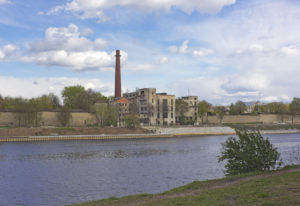When assembling National Pollutant Discharge Elimination System (NPDES) permits, permit writers must consider both technology-based effluent limitations (TBELs) and water-quality-based effluent limitations (WQBELs). What is the difference?
Before answering that question, it is important to understand that there is no single water quality standard that all regulated water bodies must achieve. Section 303(c) of the Clean Water Act (CWA) directs states to adopt water quality goals and standards for individual waters of the United States (WOTUS). These goals and standards are based on what the state determines are the designated uses of WOTUS. Section 303(c) lists four such uses: (1) protection and propagation of fish, shellfish and wildlife; (2) recreation; (3) public drinking water supply; and (4) agricultural, industrial, navigational, and other purposes. Different designations will typically be subject to different quality standards.
The state designations must be reviewed and approved by the EPA. If the EPA disapproves a designation and the state does not adopt the necessary changes, the EPA must propose and promulgate a replacement standard. Once the standard is in place, the permit writer develops permits that contribute to maintaining or achieving the standard or designated use. TBELs and WQBELs are two of the devices in the permit writer’s toolbox.
TBELs
TBELs are the minimum level of effluent quality attainable using demonstrated technologies for reducing discharges of pollutants into WOTUS. EPA’s NPDES Permit Writers’ Handbook divides TBELs into two categories: publicly owned treatment works (POTWs) and non-POTWs (or industrial dischargers). POTWs in existence on July 1, 1977, must meet discharge limitations based on secondary treatment standards, equivalent-to-secondary-treatment standards, and standards based on special considerations that are applied on a case-by-case basis.
Secondary treatment typically involves utilizing primary treatment (simple settling) followed by suspended growth aeration processes (activated sludge), which are designed and operated to treat soluble organic matter and settle suspended solids. Not all POTWs have the equipment to conduct secondary treatment. In such cases, the CWA allows use of equivalent-to-secondary-treatment standards (e.g., waste stabilization ponds or trickling filters). Equivalent-to-secondary-treatment standards may not achieve the results of secondary treatment, but Congress allowed this alternative for small POTWs that would otherwise be forced to construct costly treatment systems.
TBELs for industrial dischargers must reflect pollutant reductions that can be achieved by categories or subcategories of industrial point sources using specific technologies (including process changes) that the EPA identifies as meeting the statutorily prescribed level of control under the CWA. These national industrial wastewater controls are called effluent limitations guidelines and standards (ELGs). Unlike WQBELs, which are site-specific, ELGs are national and establish performance standards for all facilities within an industrial category or subcategory.
TBELs are developed independently of the potential impact of a discharge on the quality of WOTUS. This is where WQBELs enter the picture.
WQBELs
WQBELs must be included in permits when TBELs by themselves will not achieve the desired water quality. Stated in terms of goals, TBELs are intended to result in zero discharge of pollutants, while WQBELs are intended to change the quality of the water body so that it supports the designated use. Here are several points about WQBELs:
- States may adopt both numeric and narrative WQBELs. Numeric water quality criteria are developed for specific parameters to protect aquatic life and human health and, in some cases, wildlife from the deleterious effects of pollutants. States establish narrative criteria where numeric criteria cannot be established or to supplement numeric criteria. It is not unusual for states and the EPA to disagree over whether narrative or numeric WQBELs are appropriate for a specific pollutant.
- The values or limits for specific pollutants in a WQBEL are sometimes derived from total maximum daily loads (TMDLs). A TMDL is a calculation of the maximum amount of a single pollutant that a water body can receive and still meet water quality standards. NPDES permits for individual sources must include the TMDL’s wasteload allocations (WLA), or the amount of specific pollutants the source may discharge into WOTUS. A WLA is commonly translated into a WQBEL.
- Another category of pollutant that requires WQBELs in permits covers pollutants included in the discharger’s previous permit. Permit writers must determine whether the conditions leading to a decision to include WQBELs for the pollutant in the previous permit continue to apply. Where those conditions no longer apply, the permit writer would need to complete an antibacksliding analysis to determine whether to remove the WQBELs from the reissued permit.
WQBELs are not necessarily set in stone. For example, a WQBEL may change temporarily or permanently if a water body’s designated use is reclassified or if a water-quality-standard variance is granted.

